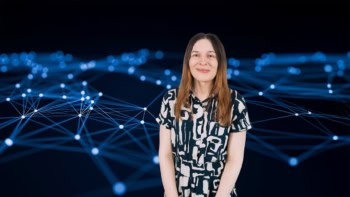At some point in their working lives, many scientists have an idea for a commercial product inspired by their research. Some even take it to the next stage of launching a spin-off company and developing a working prototype of their product. But there is still a vast gulf between creating a nifty demonstration of a concept and actually finalizing a new product that people will buy. This short film examines the process of taking an idea from the science laboratory to the marketplace by visiting some companies and innovators in the Boston area of the US.
One of the companies featured is MC10, which specializes in developing flexible electronics for health and fitness applications. We examine some of the ingredients that have contributed to the success of MC10, such as the type of people it hired in the early days. The film profiles one of its products – the Reebok CHECKLIGHT – developed in partnership with partnership with US consumer sports giant Reebok. It is essentially a skullcap used in contact sports such as American football to gauge the extent of impacts to the head.
All companies, including MC10, have to pass through a stage in the commercialization process known as the “valley of death”. Precise definitions vary, but this is essentially the stage at which a company has an initial prototype for a product or service but lacks the resources needed to translate this into a fully fledged profitable business. Our film illustrates this concept of a valley of death in a quirky cartoon.
As well as scientists involved in spin-offs, the film also features people perhaps more familiar with the commercial world. One of the interviewees is venture capitalist Stan Reiss of the firm Matrix Partners, who talks about what he looks for when investing in a start-up company. “I’ve met a lot with professors who have a great idea and they want it to happen but they don’t want to do it,” he says. Reiss always ensures that a start-up always has at least one person committed to the cause full time, because commercializing research is often far more laborious than scientists first realise.
This video was produced in connection with the November issue of Physics World, which is a special issue devoted to the process of commercializing physics. Find out how to access the issue in this blog post.



